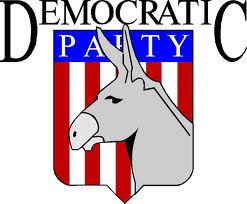Who is Moving Evansville’s Cheese?
By Jason Salstrom
February 27, 2025

For generations, Evansville’s economy ran on a strong foundation: factories produced, paychecks arrived, and families built their futures. Our “cheese”—the prosperity of stable industries—was secure. But just as electricity rewrote our way of life a century ago, AI, automation, and digital manufacturing are doing the same today, and it’s just the beginning. The shift is happening whether we acknowledge it or not. The only question that matters is: will we
act now and shape our future, or hem and haw, stuck, clinging to a disappearing past?
Our situation reminded me of Spencer Johnson’s classic business fable Who Moved My Cheese? The story is about four residents of a maze: two mice, Sniff and Scurry, and two little people, Hem and Haw. Every morning, the four headed out into the maze to get their
cheese, their livelihood, at the Cheese Station. Below is my adaptation, staying true to the spirit of the tale.
Cheese Station E was built during the last great shift in the maze, when electricity, the primary driver of the Second Industrial Revolution, changed how we worked, and where we lived, and triggered the growth of government.
In those days, the mice and the little people were more alike than they are today. Mice, being mice, were always on their toes, ever alert to any change, threat, or new opportunity. The little people, born at a time of change, had the pioneering culture of self-reliance to lean into a changing maze, learn, make hard choices, and adapt.
However, as time went by and the maze stabilized into the economy we know, getting cheese from Cheese Station E became a way of life. Mice, being mice, remained vigilant, ever ready for any disruption or new opportunity. Most of the little people, being little people, grew comfortable, even complacent, and developed beliefs to justify a sense of entitlement to their way of life.
One day, Sniff and Scurry began noticing that slight changes in the maze were multiplying. The corridors that brought skills and material into Cheese Station E and moved product out, once a miracle of efficiency, began slowly tilting against the flow of inputs and outputs. Productivity was in decline, as was the supply of cheese—the prosperity of stable industries.
In fact, Sniff and Scurry noticed changes multiplying across the maze. Some seemingly insignificant changes proved to be weak signals of change coming. Some change came out of nowhere. New corridors emerged, some steep, some dark, and old ones shrank, grew steep, or even sloped down to a sudden cliff.
The mice, being mice, remained vigilant, probing for threats to their well-being and new opportunities to prosper. Many of the little people, fearing the uncertainty, blamed others for the changing maze, expected the government to re-level the corridors back to their favor, and otherwise disregarded the accelerating change to the maze where their livelihood had long been found.
Sniff and Scurry were not surprised when Cheese Station E suddenly stopped producing cheese. They quickly moved on, having been probing the changes to the maze in their trial-and-error way.
Hem and Haw were unprepared. Hem protested, “Who moved my cheese?” Denial turned to anger, as he demanded that someone “make things right again.”
Haw, initially side-by-side with Hem, increasingly thought of the mice, always pioneers, reflecting on the enterprising spirit he once dismissed. But he still felt stuck. Much like America experienced a century ago, uncertainty, anxiety, and fear drove questions and fueled protests. “Why weren’t we warned?” “Why aren’t we prepared?” “Who’s responsible?” Mobs soon surrounded City Hall, until the mayor emerged and pointed her finger down Main Street at the office where decades of economic development strategic plans sat on shelves collecting dust.
The pointing of fingers may soon begin. The future of Cheese Station E is at a turning point, actually unprecedented, due to the never-before-seen rate of technology-driven change to the maze. The many hundreds of thousands, if not millions of dollars in “strategic plans” sitting on shelves (no Return On Investment) sit there collecting dust largely because the business model of consultants is incompatible with solving complex challenges.
Lots of data from government websites or other sources made pretty, is largely useless. Given that it is backward-looking, it often fuels biases, false assumptions, and strategic blind spots.
Strategic (enabling) management systems are what is needed. For this, we must start with clarity on the actual living system whose assets, capabilities, and constraints interact to shape outcomes here every day.
What are the enabling and inhibiting factors shaping outcomes, today? What is or is not possible to change today? What is or is not easier to change, today? Where are we vulnerable and where are we feeling the pressure to change today?
Understanding this is what informs us where to start to create the desired outcomes for tomorrow. In other words, given the state of the maze, what could we actually do? What should we do? What will we do? Then, measure progress. Monitor for change. Learn. Adapt. Prosper.
Strategic management is necessarily agile, constantly sensing and making sense of change. Instead of hiring another consultant to “create” (pay them to repurpose) another strategic plan or roadmap—that fails to inform even the first step—we need to start by accepting the fact that five-year plans and roadmaps are only useful when the destination in known; for example specs for roads and bridges are largely known, as well as segments of energy (2030 is 60-80% knowable), automaker supply chains (50-70% knowable), and Healthcare (40-60% knowable). The unknowable percentage is being disrupted by 2030.
Like a century ago, the “pioneers” among us must lead the way. Necessity is the mother of invention. Small (safe-to-fail) experiments (opportunities) emerge out of real understanding of our living ecosystem (especially its constraints)—the maze on which our well-being depends.
Effective experiments are developed into pilots, some of which are developed into new economic assets that establish a competitive advantage for regional industry and workers—a cheese station that adapts to an evolving maze as a feature of its operating system. The challenges are complex. Five-year plans to address “complex” challenges, fail. But the consultant will point his finger at you, “failed execution.” It is a mismatch of a strategic approach.
A complex challenge is when you are building toward an uncertain outcome; critical future specs are unknown, like raising a kid, moving to a new country, launching a new product, or integrating AI into your value chains. This necessarily requires an agile approach and must be developed internally.
A merely complicated challenge is like building a car, requiring special expertise, but you are building something that was designed in the past, can be disassembled and reassembled, and can continue to be what it was designed to be perpetually (being a contained, ordered system)—even if suddenly obsolete.
A social-economic-political-workforce-industrial system is not complicated, it is complex, and, like a teenager, is best developed indirectly by shaping the maze shaping their future.
The complexity we face is made exponential by the added complexity of emerging, cascading, recombining technologies changing everything—whether we like it or not.
A century ago, electricity combined and recombined with steel, petroleum, and the telegraph, to remake society, the economy, and government—our maze. Henry Ford dominated because he led in leveraging four of the five transformational technologies of the day, enabling everything from mass production to vertical integration—and 5X wages. Corporations that did not, fail.
Henry Ford collaborated with other leaders to shape their maze into an ecosystem that enabled adaptation and innovation. Activating an ecosystem takes leadership. “When everybody boosts everybody wins,” repeated Mayor Benjamin Bosse as he rallied
Evansville’s pioneers as they adapted to the Second Industrial Revolution and shaped the maze on which we prospered for generations.
Today, in the near term, AI and automation alone will impact the US manufacturing base at a pace faster than any mass industrial shift in history. The cliff is coming for Hem and Haw. The impact of emerging technologies is hard to imagine given the exponential unknowable
unknowns—and Quantum Computing and Fusion Energy may be around the corner. Decades of transformation comparable to the Second Industrial Revolution may be compressed to years—for the places that survive.
A century ago, it took decades for emerging technologies to affect most Americans. Today, ChatGPT had one million users in 5 days, one hundred million in 2 months, with AI already transforming every industry—whether Hem and Haw are paying attention or not. In Who Moved My Cheese? Haw eventually realizes, “The quicker you let go of old cheese, the sooner you find new cheese.” Strategy is about hard choices. Hem is left to his fate. Like a century ago, we face social, economic, and political disruption. The question is not who moved our cheese, but who is leading our adaptation to the new maze?
Evansville still has opportunities where we can lean in and prosper. Our manufacturing cluster, logistics infrastructure, and healthcare systems can leverage emerging technology to give us an edge—if we act now and “everyone boosts.” Regional leaders must lead by creating the conditions to collaboratively develop new models of workforce re-training, and scaffolding to enable the leveraging of Industry 4.0, AI, blockchain, etc., etc., etc., and ensure that we are ahead of the curve on building the enabling infrastructure.
Chasing what other places did a decade ago will only slow our pace, in the fog, to a sudden cliff. Those ahead of the curve on electricity dominated for a century. It is time to make hard choices before we have no choices to make.
The future belongs, once again, to the pioneers making the most of what the maze affords them. Evansville, who is leading the way?
FOOTNOTE: Jason Salstrom works at the intersection of strategy and technology, helping organizations shape the maze. https://www.linkedin.com/in/jsalstrom



















